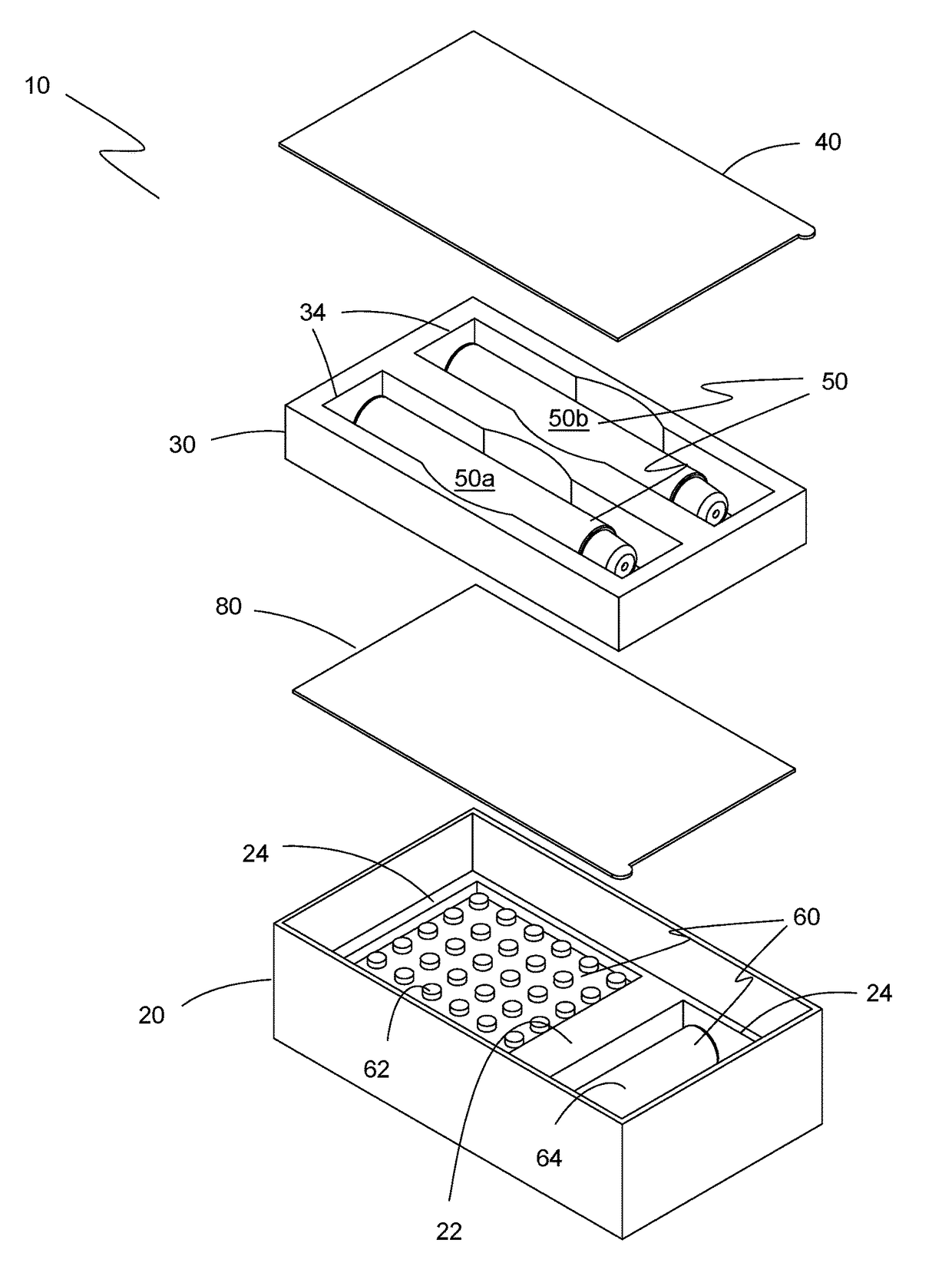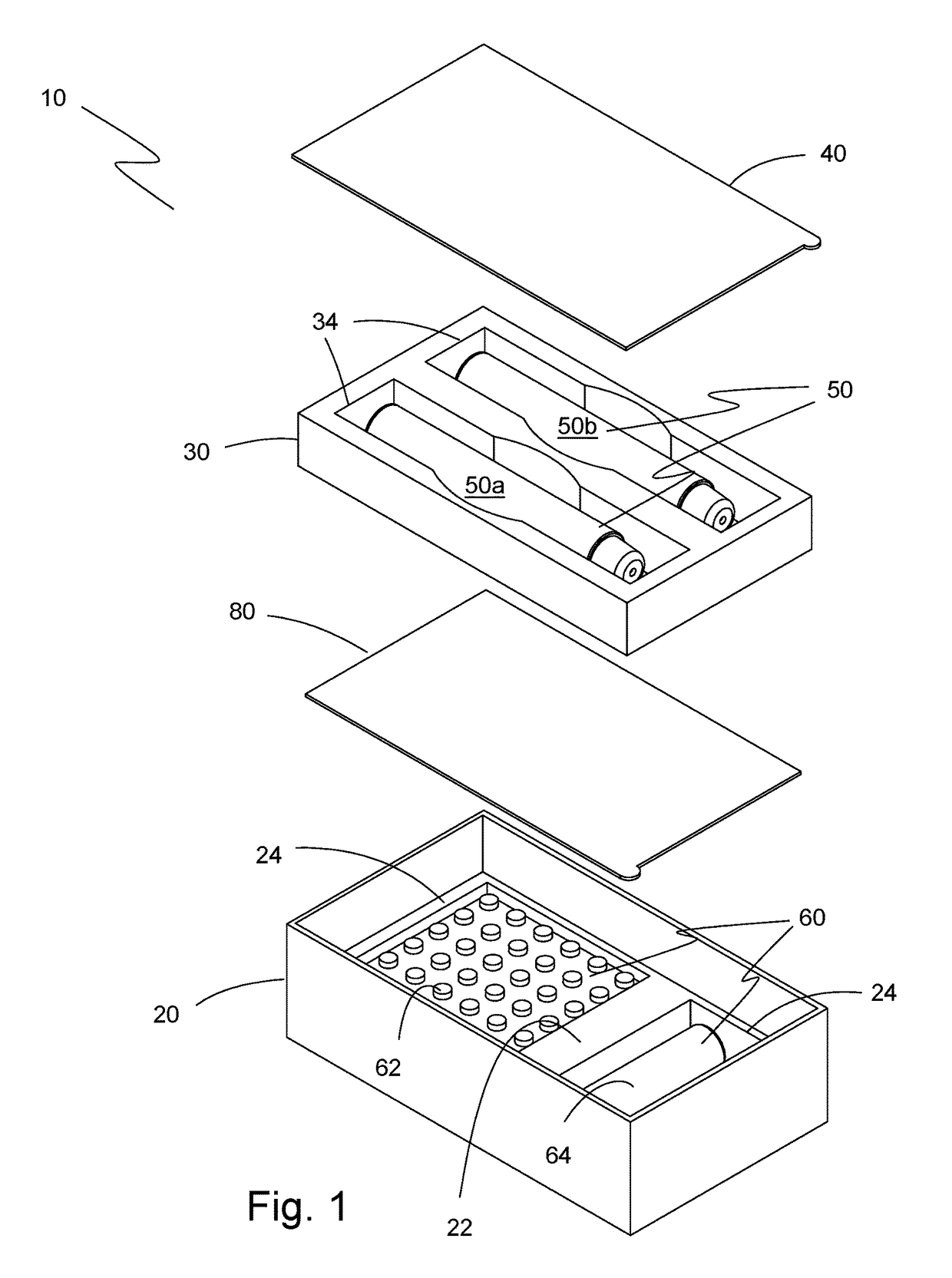Method and device for treating allergic reactions and difficult-to-manage respiratory diseases
a technology for respiratory diseases and allergic reactions, applied in the field of methods and devices for treating allergic reactions and difficult-to-manage respiratory diseases, can solve the problems of increasing the risk of life-threatening reactions, putting patients at great risk, and reducing the number of patients who are treated. , to achieve the effect of reducing the error of medication selection
- Summary
- Abstract
- Description
- Claims
- Application Information
AI Technical Summary
Benefits of technology
Problems solved by technology
Method used
Image
Examples
Embodiment Construction
[0054]The preferred embodiments of the present invention are illustrated in FIGS. 1-9. FIG. 1 shows one embodiment of the allergic reaction treatment kit 10. Treatment kit 10 includes a container 20 having a lower tray 22 containing a second-line treatment medication 60, a removable upper tray 30 containing a first-line treatment medication 50 and a container sealing cover 40. Lower tray 22 has one or more lower compartments 24 for containing one or more second-line treatment medications 60. Upper tray 30 also has one or more upper compartments 34 for containing one or more medications for the first-line treatment medication 50. Container sealing cover 40 retains the first treatment medications 50, the upper tray 30 and the second treatment medications 60 in a sealed environment within container 20 until a person having an allergic reaction requires treatment. Allergic reaction treatment kit 10 may optionally contain instructions 100 for administering the first-line and second-line ...
PUM
| Property | Measurement | Unit |
|---|---|---|
| swelling | aaaaa | aaaaa |
| blood pressure | aaaaa | aaaaa |
| flexible | aaaaa | aaaaa |
Abstract
Description
Claims
Application Information
 Login to View More
Login to View More - R&D
- Intellectual Property
- Life Sciences
- Materials
- Tech Scout
- Unparalleled Data Quality
- Higher Quality Content
- 60% Fewer Hallucinations
Browse by: Latest US Patents, China's latest patents, Technical Efficacy Thesaurus, Application Domain, Technology Topic, Popular Technical Reports.
© 2025 PatSnap. All rights reserved.Legal|Privacy policy|Modern Slavery Act Transparency Statement|Sitemap|About US| Contact US: help@patsnap.com



